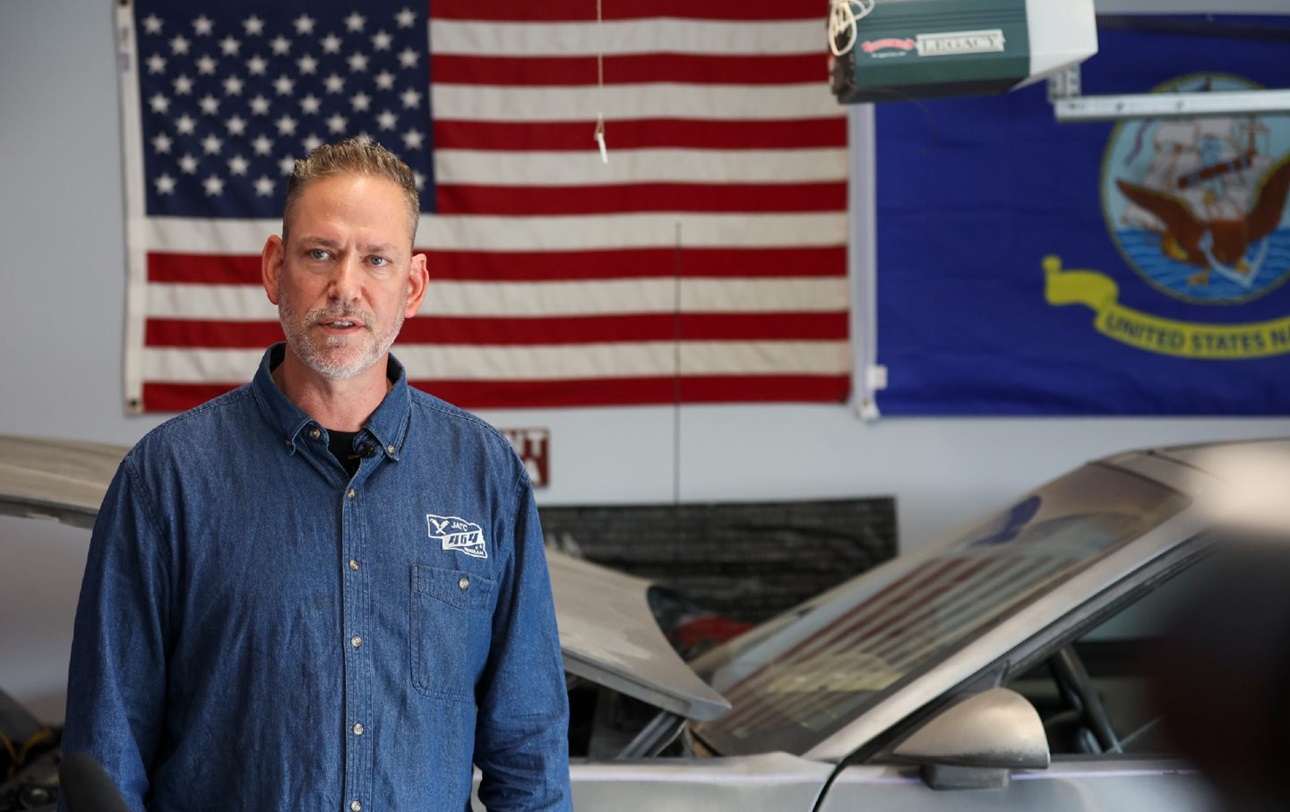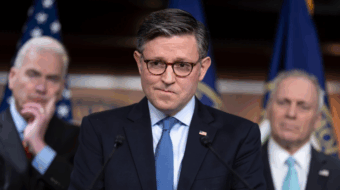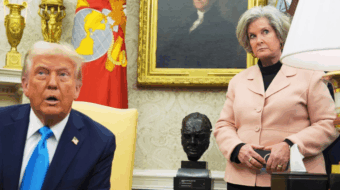
Unlike in Las Vegas, one can never be certain that what happens in Nebraska will stay there. On Election Day, who becomes president and what party controls the Senate and possibly even the House may hinge on what the people in one Nebraska congressional district do three weeks from now.
Despite being a deeply “red” state, Nebraska’s election laws and its history of relative fairness, pragmatism, and independence make it a wild card.
If Kamala Harris wins the state’s “blue dot” and prevails in the Midwest “blue wall,” she’ll reach the 270 electoral votes needed to win. If Independent pro-labor U.S. Senate candidate Dan Osborn wins in Nebraska, he could caucus with Democrats, giving them a workable majority on critical issues. And if Democrat State Sen. Tony Vargas wins the 2nd Congressional District race in the state, it could help Democrats win the House majority.
Such victories would underscore the existence of an anti-MAGA, pro-democracy majority, even in a place like Nebraska, including Republican Nikki Haley voters who can’t bring themselves to vote for Trump. In addition, Nebraskans will also be voting to amend the state constitution to enshrine abortion rights, one of ten states with reproductive rights on the ballot, which could drive turnout.
Nebraska, like Maine and unlike any of the other 48 states, distributes electoral votes to the winner of each Congressional District. The “blue dot” is the 2nd CD which is expected to vote Democratic despite the rest of the state voting deeply red. The Harris campaign is investing heavily in the ‘blue dot” and expects to win, even though Democratic presidential candidates haven’t always in the past. Biden won the “blue dot” in 2020 despite Trump winning the state by 20%.
The 2nd CD is very racially and economically diverse. The district covers Omaha and Lincoln (500,000 of the state’s 1.9 million population live in Omaha), is heavily working class, and is centered on meat packing and manufacturing with a vibrant trade union movement.
The district has substantial African-American, Latino, Asian, and Native-American populations, two large universities and medical facilities, global finance corporations, a small business network, and a rising tech center dubbed “Silicon Prairie.” It also includes suburban and rural communities.
Politically, Democrats and independents dominate urban areas and are competitive in suburban areas, while Republicans dominate the rural counties.
Organized labor, social justice movements, independents, and the Nebraska Democratic Party have been building power through broad coalition politics in the 2nd CD and across the state over the past decade.
Didn’t come out of nowhere
“This just didn’t come out of nowhere,” says Nebraska Democratic Party chair Jane Kleeb. “We’ve been working for ten years building down the ballot, our block captain program, voter guides, aggressive vote by mail program. So, we feel prepared to meet the moment and we’re glad it’s here.”
LULAC, Fuerza Latina, and El Poder del Voto Latino are among the groups organizing the rapidly growing Latino population. Nebraska chapter president Juan Carlos Garcia said they’re partnering with other Latino groups to register and turn out voters.
“Even speaking to people out on the street, every time I’m out here, I’m talking to people like ‘Are you registered to vote?'” said Garcia.
Trump and MAGA know most Americans oppose their policies. So, they have to resort to every trick in the book to deny the will of the anti-MAGA majority, including voter suppression, voter purges, stacking election boards with MAGA appointees, and changing election rules.
Republicans have attempted 17 times to repeal the state law dispersing electoral votes by Congressional District since the state adopted the method in 1992. Understanding that a close election could come down to one electoral vote, Trump attempted to eliminate the “blue dot” by changing Nebraska’s election law to make it “winner take all.”
Trump’s all-out pressure scheme failed when GOP State Senator Mike McDonald opposed the change. Democrats and Republicans intensely pressured McDonald, but he ultimately declined to support it.
McDonald’s opposition reveals the complexities of Nebraska politics. McDonald was a decades-long Democrat until January when he left the party over abortion and trans rights. However, McDonald, a former labor leader, still has ties and many shared values with Democratic lawmakers and wants to run for mayor of Omaha next spring. McDonald knows he needs Democrats, independents, moderate Republicans, and a multi-racial coalition to win.
McDonald’s opposition also reflects fractures within the state and county GOP, taken over by MAGA extremists led by the plutocrat Ricketts family, prominent backers of Trump. MAGA fascists are turning off many moderate Republicans, and during last spring’s primary election, all five statewide GOP candidates defeated MAGA fascists despite themselves being extremely conservative.
The Omaha Congressional District also features a competitive House race pitting Vargas against incumbent U.S. House Republican Don Bacon, a Christian nationalist who supported Nikki Haley but now supports Trump. Vargas is a former public school teacher backed by a multi-racial coalition, especially the growing Latino population, Nebraska AFL-CIO, faith-based leaders, reproductive rights, and other social justice groups.
Few saw the tight U.S. Senate race coming between the independent pro-labor Dan Osborn and Deb Fischer, an unpopular incumbent MAGA GOP senator. Osborn, a steamfitter by trade, rose to national prominence, leading the Bakery, Confectionary, Tobacco Workers, and Grain Millers International Union during a successful 77-day strike against Kellogg’s in 2021. The unions representing railroad workers first approached Osborn to run.
Wants to pave the way
“I want to pave the way for nurses, teachers, plumbers, carpenters, and other working people to run for office. I want to show that you don’t have to be a self-funding crypto billionaire to run,” says Osborn.
Nebraska Democrats initially decided not to field a candidate in 2024. But when Osborn decided to run, Democratic Party County and local organizations helped him get on the ballot and chose not to run a write-in candidate.
The Nebraska AFL-CIO is going all out to elect Osborn “because we know he will be a champion for working people,” said Lori J. Meyers of the Nebraska State AFL-CIO. “Osborn has proven that he will fight to ensure that workers have a voice in the workplace, protect, and strengthen labor standards and expand employment protections.”
Campaigning in Nebraska for Osborn, UAW President Shawn Fain said, “If we elect an independent mechanic to the US Senate… think of all the teachers, the plumbers, auto workers, nurses, farmers, rail workers who will join him there. This is our generation’s defining moment.”
Osborn supports reproductive rights and worker’s rights and champions the concerns of family farmers but is more conservative on immigration and gun safety issues. He is backed by an energized, broad coalition and raised more campaign funds, primarily small-dollar donations, than any independent candidate in Nebraska’s history.
“We believe a cross-partisan coalition is going to pull Dan Osborn over the finish line,” said Kleeb. “Fischer has been non-existent, younger voters don’t know her, rural voters are pissed at her over property rights and water rights. Osborn has a path to victory.”
Nebraska votes approximately 45% GOP, 35% Democrat, and 20% Independent. Circumstances have forced progressives to build broad, diverse, cross-partisan, multi-racial, urban-rural coalitions to advance their agendas.
Non-partisan politics run deep in Nebraska’s history, including its non-partisan unicameral state legislature. Even though Republicans dominate state politics, its pragmatic, independent politics often defy conservatism. For example, Nebraska settles more refugees per capita than most states and is the only state where electric utilities are all public entities.
United, broad, and diverse coalitions have racked up some impressive wins. The victories included defeating the Keystone XL pipeline, which united a coalition of environmentalists, Native Americans, and farmers concerned that a burst pipeline would impact the Ogallala Aquifer.
Coalitions won passage of statewide Medicaid expansion, a higher minimum wage, and driver’s licenses for Dreamers, outlawed the death penalty (later reversed through a ballot measure engineered by MAGA Governor Ricketts), and defeated restrictive voter ID legislation and cuts to the state university system.
“We believe the reason we won is that Democrats have opened our doors to Independents and Republicans who don’t like the extremes of a Trump or Tea Party,” said Kleeb. “A deep sense of fairness is at the core of America’s rural communities. Progressive and populist roots run deep in rural communities,” said Kleeb.
Populist hatred of agri-business corporations runs deep among Nebraskan family farmers, meatpackers, and communities, like the one in the rural Sand Hill region where Democrat Vice Presidential candidate Tim Walz hails from.
“This coalition is why Harris and Walz will win the Blue Dot and Tony Vargas will win the 2nd CD. Dan Osborn is in a close competitive race. We’ve built a cross-partisan coalition on issues not parties,” said Kleeb.
We hope you appreciated this article. At People’s World, we believe news and information should be free and accessible to all, but we need your help. Our journalism is free of corporate influence and paywalls because we are totally reader-supported. Only you, our readers and supporters, make this possible. If you enjoy reading People’s World and the stories we bring you, please support our work by donating or becoming a monthly sustainer today. Thank you!










